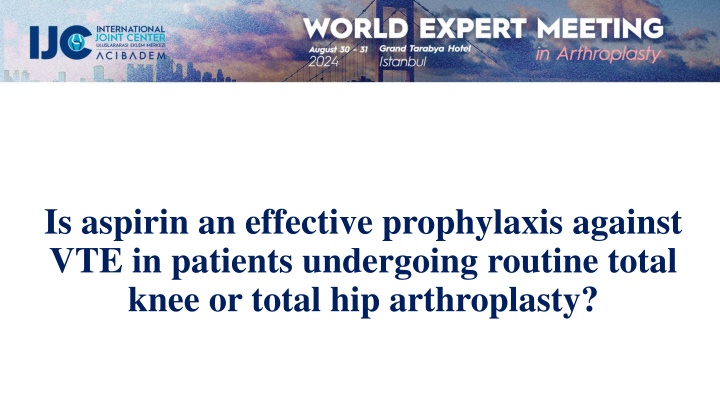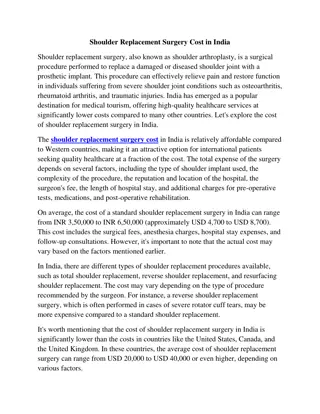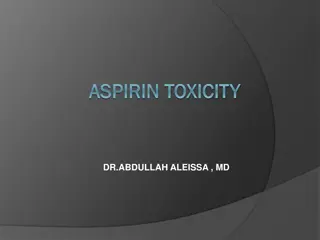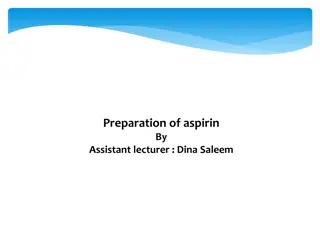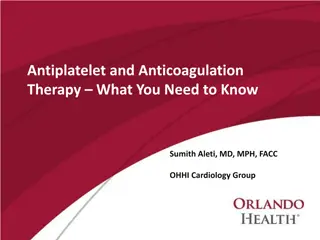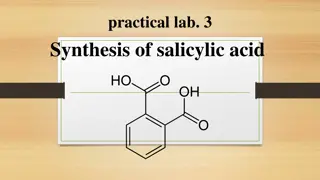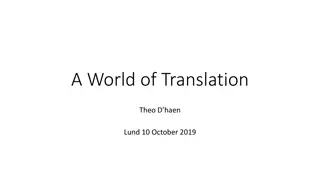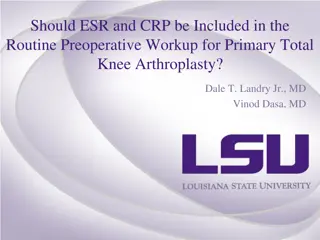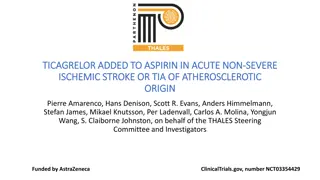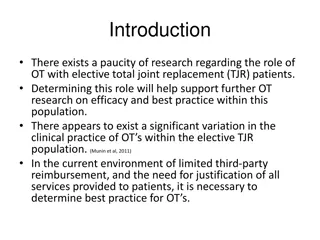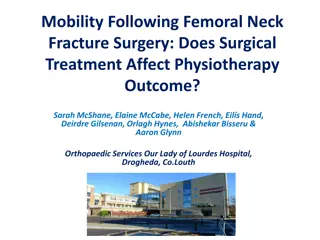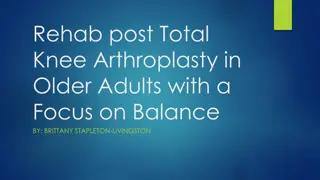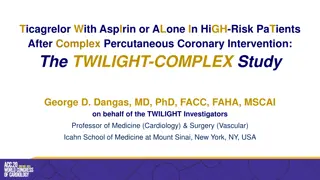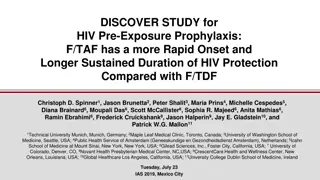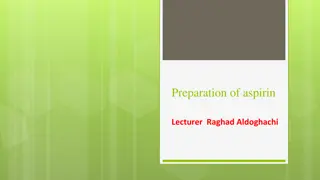Aspirin Prophylaxis in Total Joint Arthroplasty: Literature Findings
The effectiveness of aspirin as prophylaxis against venous thromboembolism (VTE) in total knee or hip arthroplasty is examined in various studies. Aspirin demonstrates comparable efficacy to LMWH and lower bleeding risks compared to other anticoagulants. Findings indicate its potential as a cost-effective thromboprophylaxis option.
Download Presentation

Please find below an Image/Link to download the presentation.
The content on the website is provided AS IS for your information and personal use only. It may not be sold, licensed, or shared on other websites without obtaining consent from the author.If you encounter any issues during the download, it is possible that the publisher has removed the file from their server.
You are allowed to download the files provided on this website for personal or commercial use, subject to the condition that they are used lawfully. All files are the property of their respective owners.
The content on the website is provided AS IS for your information and personal use only. It may not be sold, licensed, or shared on other websites without obtaining consent from the author.
E N D
Presentation Transcript
Is aspirin an effective prophylaxis against VTE in patients undergoing routine total knee or total hip arthroplasty?
Ali Parsa MD Ibrahim Tuncay MD Hamed VahedKafshgari MD Ibrahim Azboy MD Javad Parvizi MD Oliver Marin MD Alfred Cake MD William HozackMD
Why is this topic Important Easy, low-cost, and low-complication prophylaxis is important for DVT in arthroplasty to ensure effective prevention while minimizing risks and healthcare costs.
Literature Review/Process Aspirin; arthroplasty; DVT; prophylaxis Number of articles retrieved:535 Screening:53 Final number of publications:19
Findings from Literature The role of aspirin in the prophylaxis of venous thromboembolism (VTE) following total joint arthroplasty has been extensively studied. We found eight reviews (10 reports) discussed the rate of VTE between aspirin and LMWHs (1,2),Factor Xa inhibitors (3-6), and other anticoagulants (7-9). Regarding deep vein thrombosis (DVT), aspirin was found to be as effective as LMWH and more effective than factor Xa inhibitors. The pulmonary embolism (PE) rate in patients treated with aspirin was comparable to those treated with warfarin and LMWH, but it was higher when compared to factor Xa inhibitors. In terms of secondary complications, aspirin was associated with a lower risk of bleeding events, including major, minor, and total bleeding. Additionally, there was no significant difference in the mortality rates between patients treated with aspirin and those treated with other anticoagulants following THA and/or TKA. Hu et al. carried out a study, whose findings demonstrated that the efficacy of aspirin was comparable with that of rivaroxaban in VTE prevention (3). Similar findings were reported by Le et al. through their systematic review and meta-analysis (6). Many researchers have compared the effectiveness of aspirin with other thromboprophylaxis agents, namely warfarin and LMWHs (1,10-12). While some pointed out that there was no statistically significant difference in VTE prevention between aspirin and LMWH or warfarin. Freedman et al. reported an increased risk of VTE using aspirin (13). Studies have compared the incidence of DVT in aspirin-treated patients with those prescribed other anticoagulants. Analyzing data extracted from these RCTs, Drescher et al. found that the risk of DVT and PE was not significantly different between aspirin and other anticoagulants (14). In a recent analysis on national database, Parvizi et al. examine trends and outcomes in the use of low-dose aspirin versus other chemoprophylaxis for venous thromboembolism (VTE) prevention in total knee arthroplasty (TKA). Researchers assessed VTE risk profiles based on comorbidities and calculated odds ratios (ORs) and 95% confidence intervals (CIs) for various thromboprophylaxis methods in high and low VTE risk patients. Among 126,692 patients, the use of low-dose aspirin rose from 7.65% to 55.29%, while other prophylaxis decreased from 96.25% to 42.98%. Low-dose aspirin was more prevalent in low-risk populations (OR 1.17; 95% CI, 1.15 to 1.20). Both high and low-risk patients on low-dose aspirin experienced reduced odds of DVT, PE, bleeding, infections, and hospitalizations compared to those on other prophylaxis regimens (15).
What did your group determine to be the most important findings Umbrella study is a novel Our umbrella study synthesizing relevant systematic reviews confirms that aspirin is an efficient and preferred choice for DVT prophylaxis in arthroplasty.
Question: Is aspirin an effective prophylaxis against VTE in patients undergoing routine total joint arthroplasty?
Rationale: We did an umbrella study on this question. A total of 19 reviews discussing the effect of aspirin on VTE prophylaxis in TJA were included; of which fifteen were meta-analyses , two network meta-analyses, and the other two were only systematic reviews without meta-analyses. The included studies (gathering the data of more than 1.6 million TJAs) were published between 2000 (20) and 2023 , which covered the results of the original articles from 1974 to 2023. This study demonstrated comparable efficacy between aspirin and LMWH in DVT and PE prevention. Although factor Xa inhibitors may be more potent than aspirin in PE prevention, they are of lower efficacy in DVT prevention. Regarding mortality and bleeding complications, aspirin did not differ from other anticoagulants. Consequently, aspirin chemoprophylaxis following THA and TKA can be the method of choice considering its effectiveness, low expense, and convenient administration devoid of the necessity for routine blood monitoring.
Question: Is aspirin an effective prophylaxis against VTE in patients undergoing routine total joint arthroplasty? Response: Yes. Aspirin is an effective and safe chemoprophylaxis for Venous Thromboembolism (VTE) following total joint arthroplasty.
